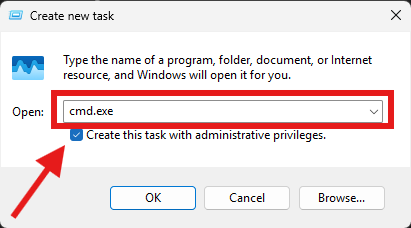Fix: Command Prompt Has Been Disabled By Your Administrator
The error message “Command Prompt (Command Prompt.exe) has been disabled by your Administrator” occurs when access to the Command Prompt is restricted. This can happen due to system policies, user account permissions, or third-party security software blocking Command Prompt access. This limitation typically prevents users from launching the Command Prompt, displaying a message indicating that access has been blocked.

Outdated Windows settings and corrupted system files might also contribute to this issue. In this guide, we will explore solutions ranging from basic to advanced, ensuring you can restore Command Prompt access and utilize the Command Prompt without interruptions.
NOTE: If you’re using a work or office computer, the Command Prompt may have been disabled by your system administrator for security purposes. Attempting to bypass this could violate company policies, so make sure you have permission or check with your IT department first. However, if you’re on an administrator account and have full rights to make changes, you can safely follow the steps in this guide to restore Command Prompt access.
1. Allow Command Prompt Through Registry Editor
To begin, we’ll use the Registry Editor to restore Command Prompt access. The Windows Registry Editor, or regedit, is a crucial tool that lets you manage your computer’s settings. Think of the registry as a comprehensive database where Windows stores vital information about your system, including hardware configurations, software settings, and user preferences.
Warning: Modifying the Windows Registry can be risky and may lead to system issues if not done correctly. It’s recommended to back up the registry first. For a step-by-step guide on how to back up and restore the registry, check out our article: How to Back Up and Restore the Registry
- Press Windows + R, type “regedit“, and press Enter.

- Navigate to:
HKEY_CURRENT_USER\Software\Policies\Microsoft\Windows\System

- Right-click on “Windows”, select New Key, and name it “System” if it doesn’t already exist.
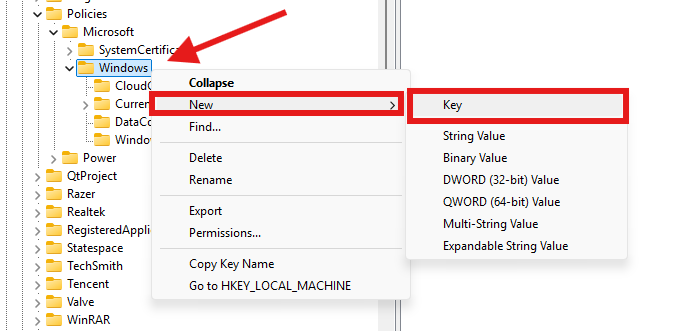
- Select the System key, then in the right panel, right-click and choose New > DWORD (32-bit) Value.
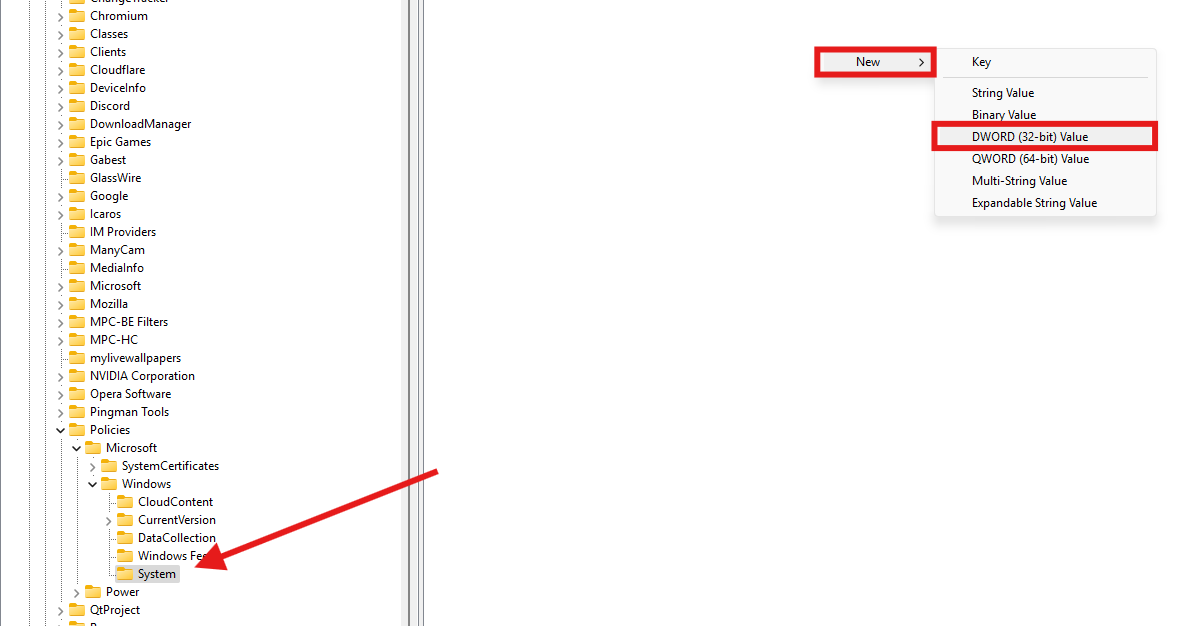
- Name the new value “DisableCMD”.
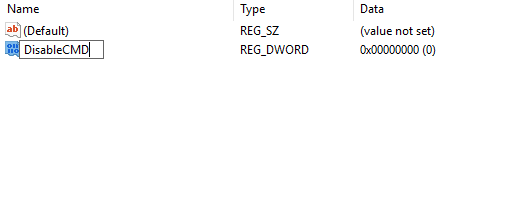
- Double-click on this value and set its Value Data to “0”.

- Restart your PC to apply the changes.
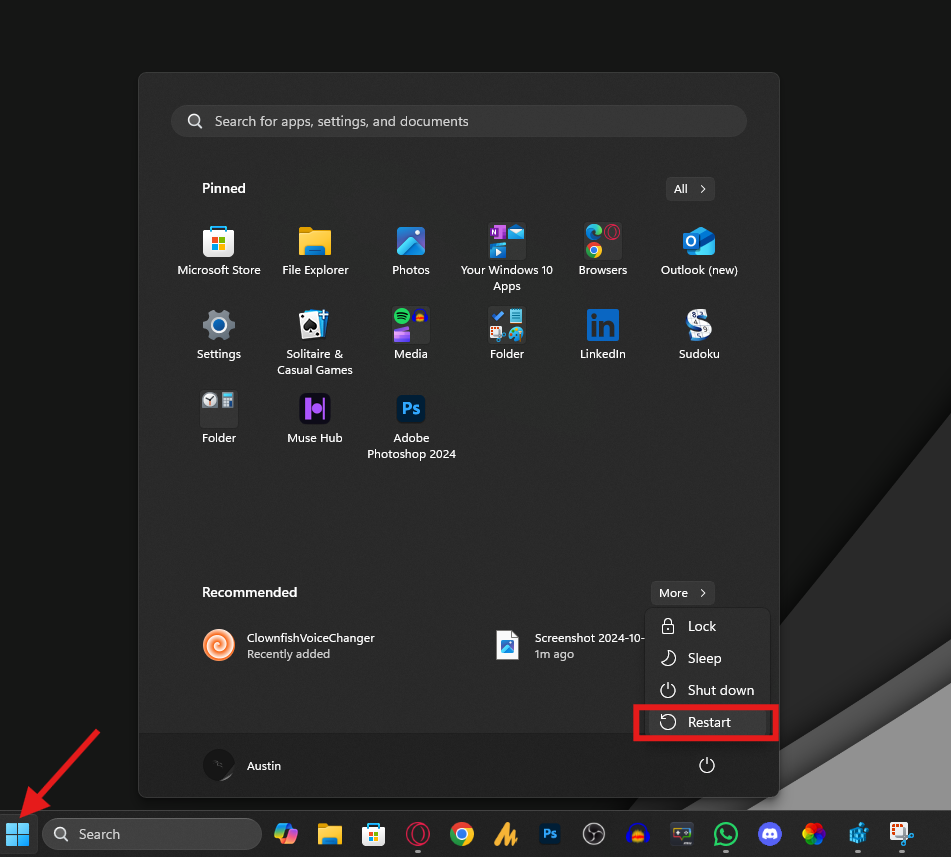
2. Allow Access to Command Prompt Through Group Policy Editor
The Group Policy Editor is another useful tool in Windows that enables users to manage settings for the operating system and applications. It allows you to define rules for security settings, software installations, and user permissions. If a policy set by a system administrator or a third-party application is blocking access to the Command Prompt, this tool can help revert such changes, allowing Command Prompt to function correctly.
Note: The Group Policy Editor (gpedit.msc) is only available in certain editions of Windows, such as Windows Pro, Enterprise, and Education.
- Press Windows + R, type “gpedit.msc”, and press Enter.
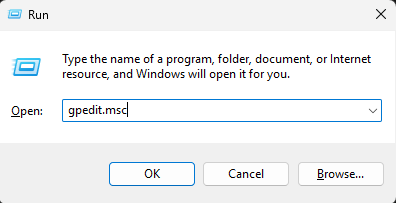
- Navigate to: User Configuration > Administrative Templates > System.
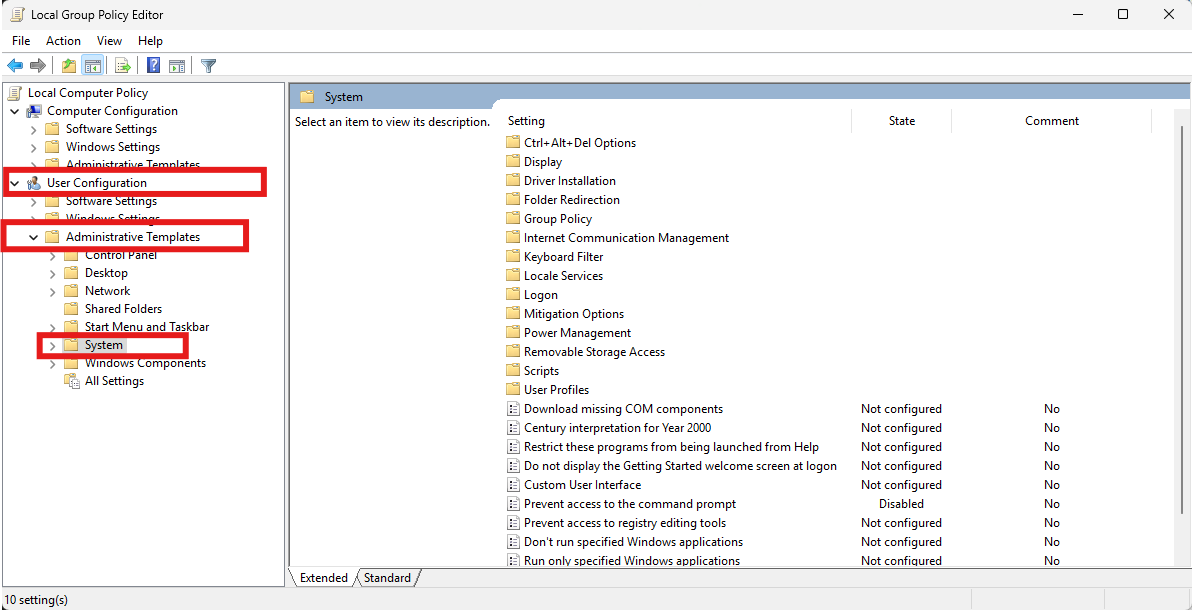
- Double-click “Prevent access to the command prompt”.

- Set it to Disabled or Not Configured.

- Click Apply, then OK.

- Restart your PC to apply the changes.
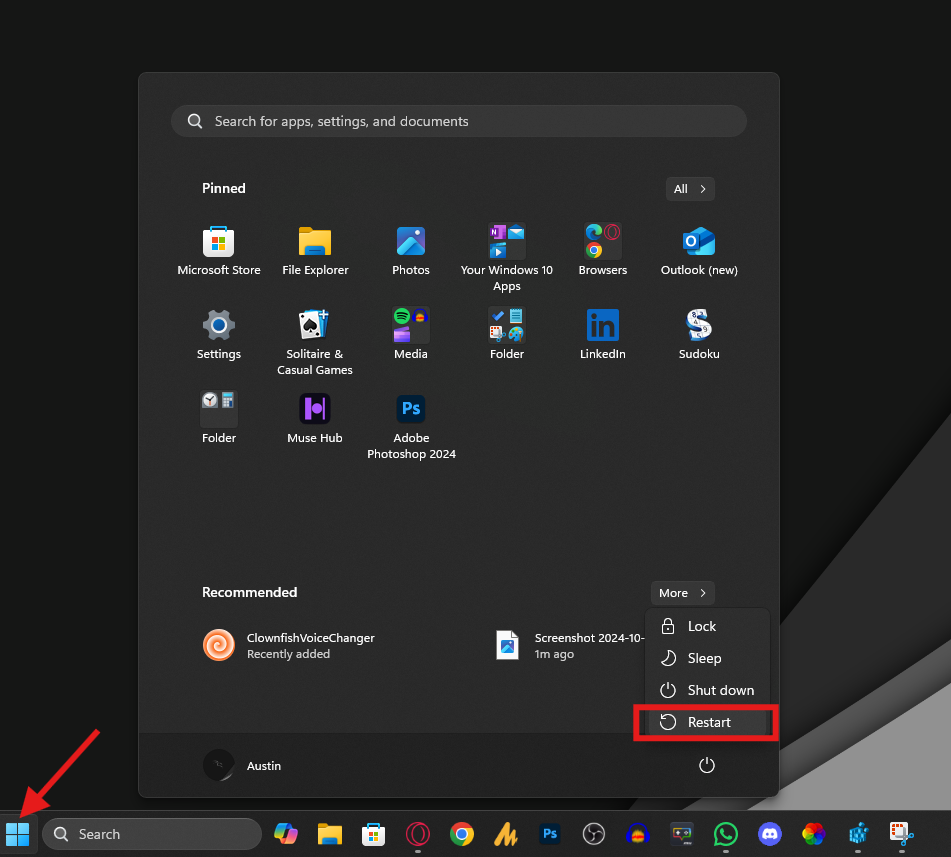
3. Create a New Administrator Account
While the previous methods are likely to resolve the issue, creating a new administrator account can be an effective alternative. This solution is beneficial as it provides a fresh user environment that might bypass restrictions applied to your current account.
Note: If you’re using a work computer or a system where account creation is restricted, you might need authorization from your administrator; otherwise, you cannot create a separate user account.
- Go to Settings > Accounts > Other Users.
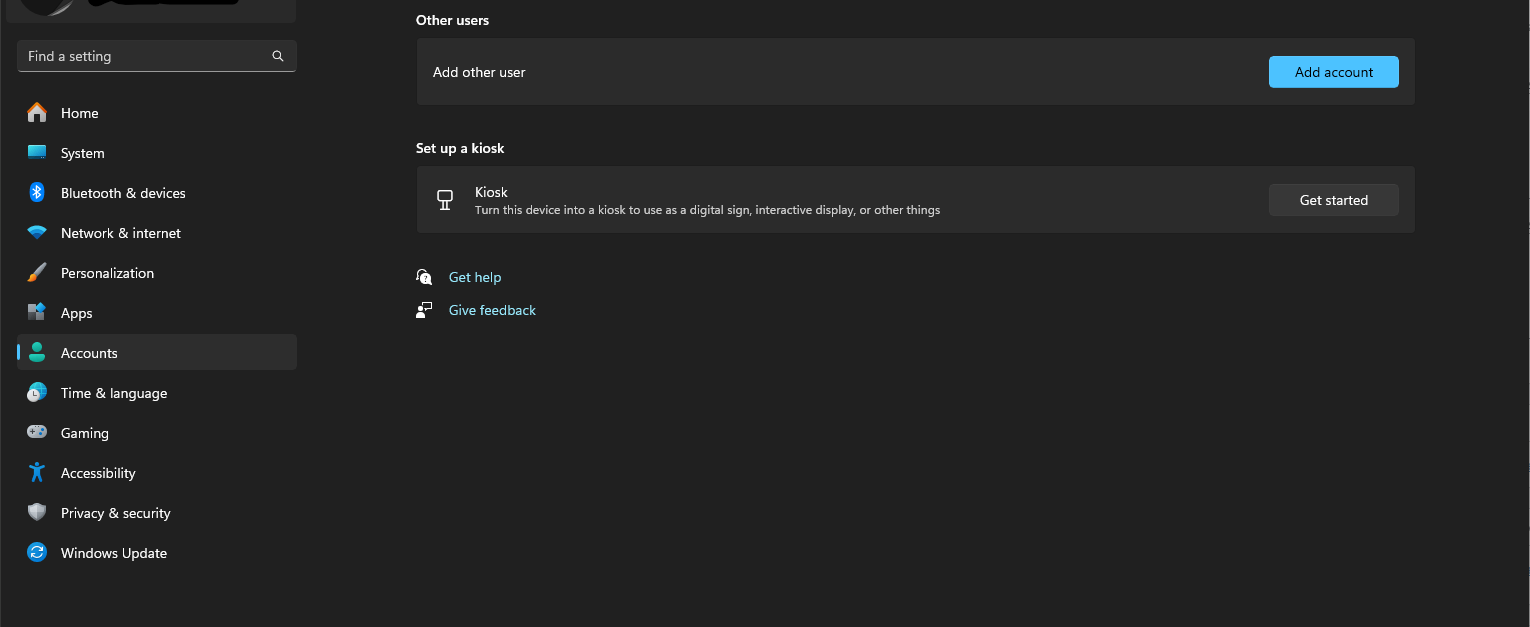
- Click Add someone else to this PC.
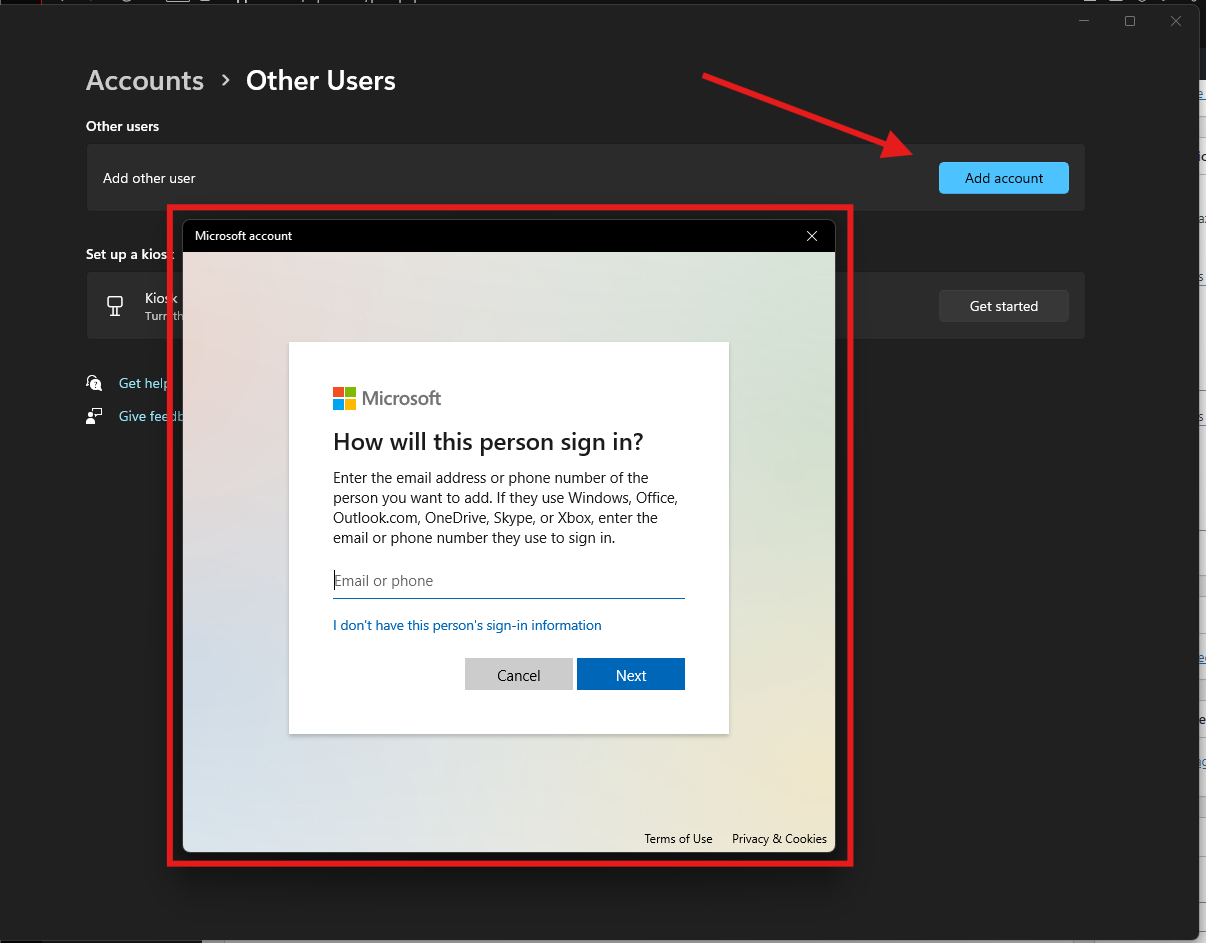
- Select I don’t have this person’s sign-in information.

- Add a user without a Microsoft account.
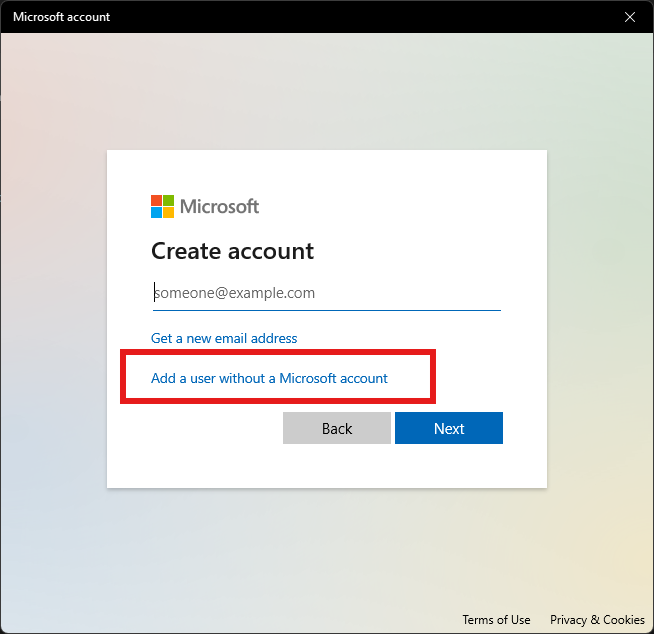
- For ‘Who’s going to use this PC?’, enter any name. To enhance security, consider adding a password, then click Next.
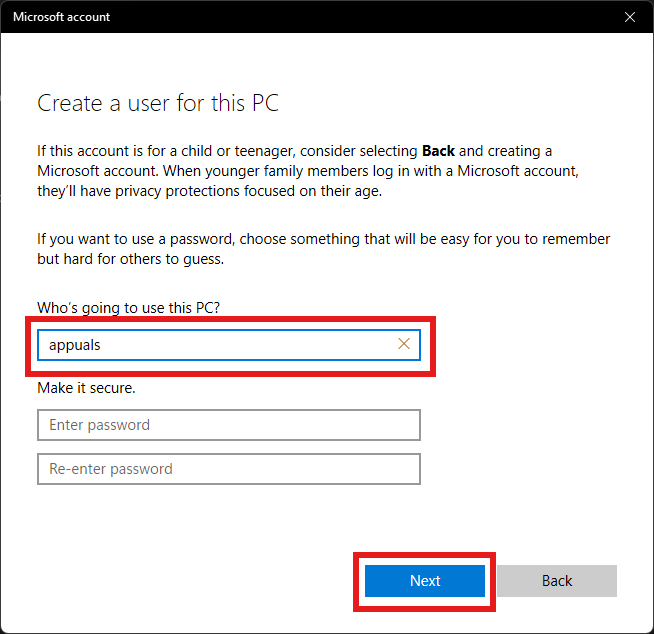
- Select the account and click the arrow.

- Change the account type by clicking on Account option > Change account type.
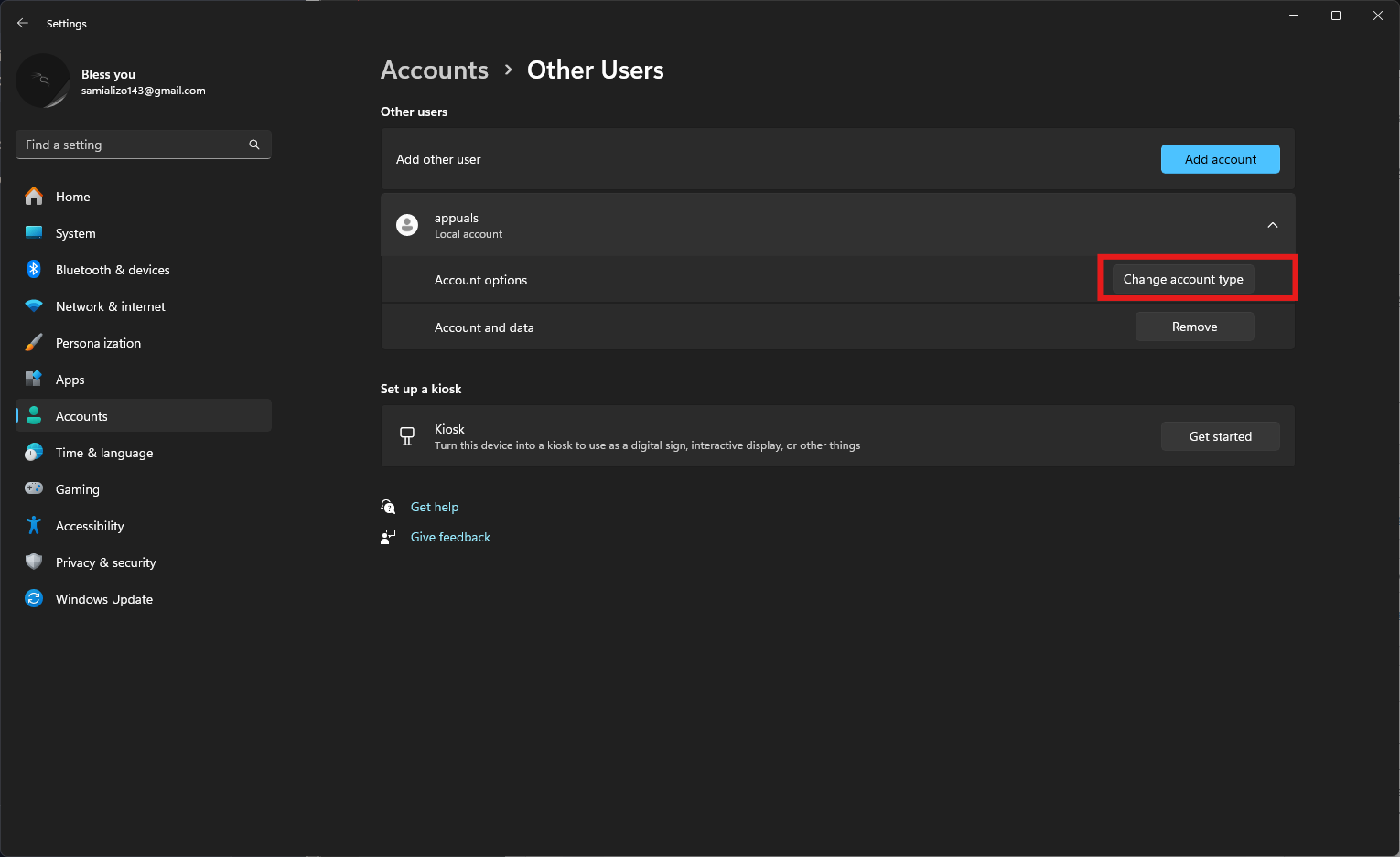
- Switch the account type to Administrator.
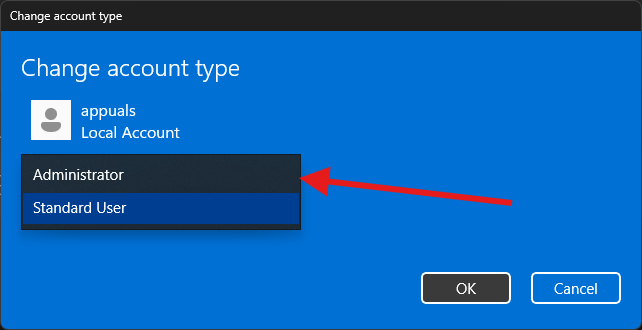
4. Alternative Ways to Use Command Prompt
If you’re unable to access the Command Prompt directly, alternative routes via PowerShell or Task Manager can allow the execution of CMD commands. These methods enable troubleshooting and problem-solving effectively, even when CMD access is restricted.
Use CMD Command in PowerShell
By entering the cmd command in PowerShell, you can invoke the Command Prompt interface, allowing CMD command execution without direct access to CMD.
- Click the Windows Search icon, type PowerShell, right-click, and select Run as Administrator.
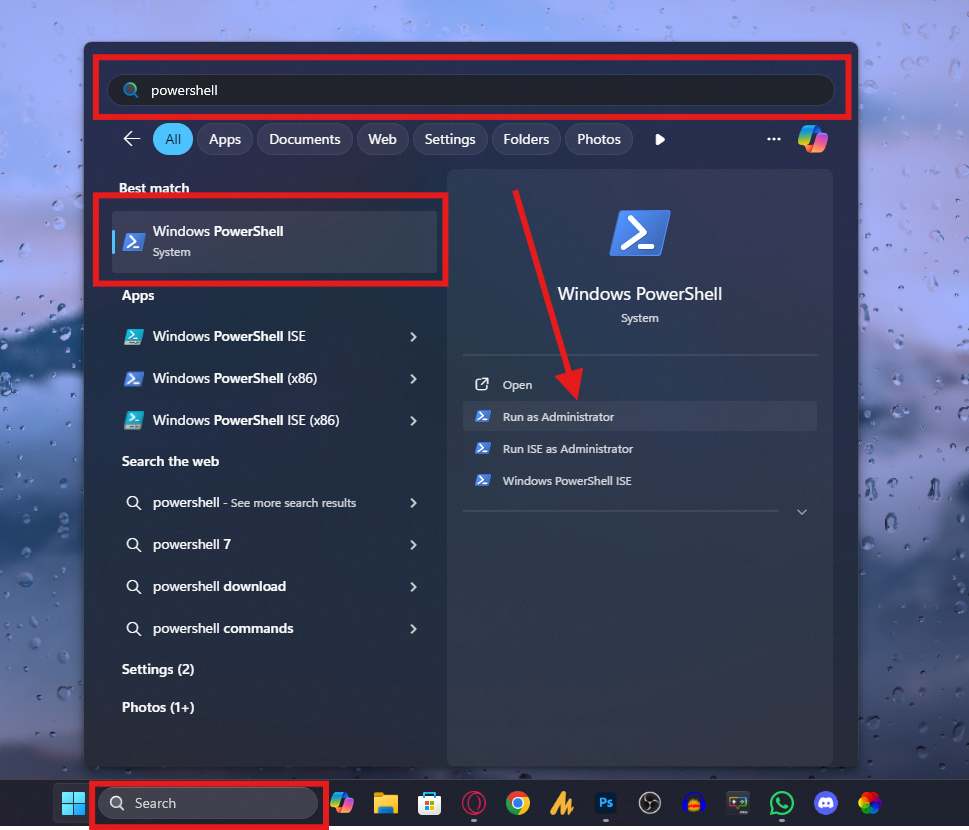
- Type
cmdand press Enter to switch PowerShell to CMD mode.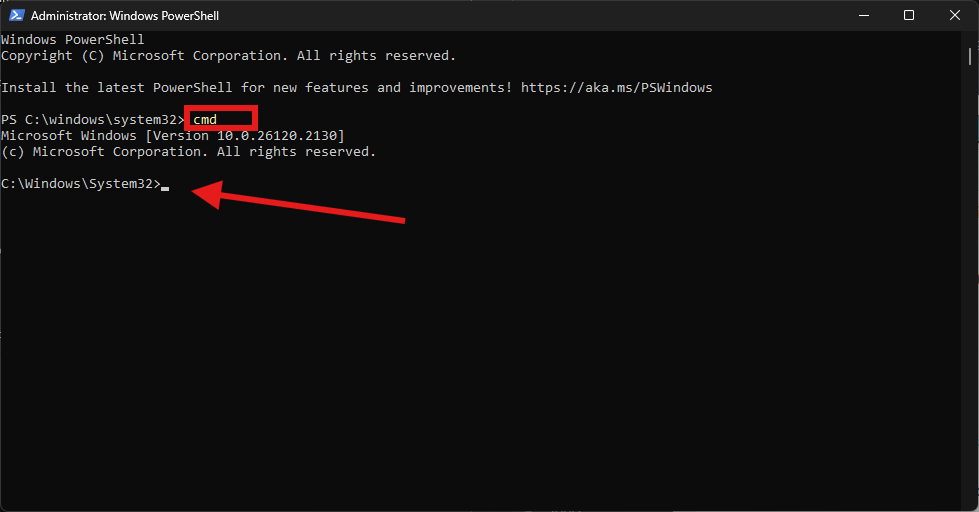
Use Task Manager’s New Task Option
Creating a new task in Task Manager with administrative privileges allows CMD to be launched even if user permissions restrict it.
- Press
CTRL + ALT + DELand select Task Manager.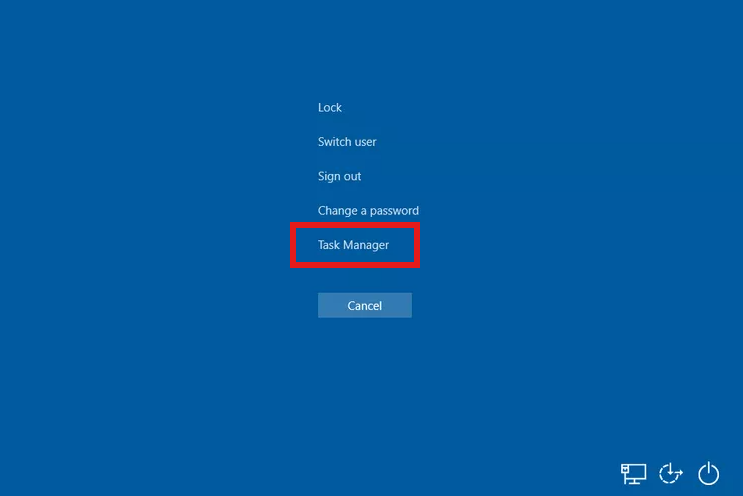
- Select File > Run new task.
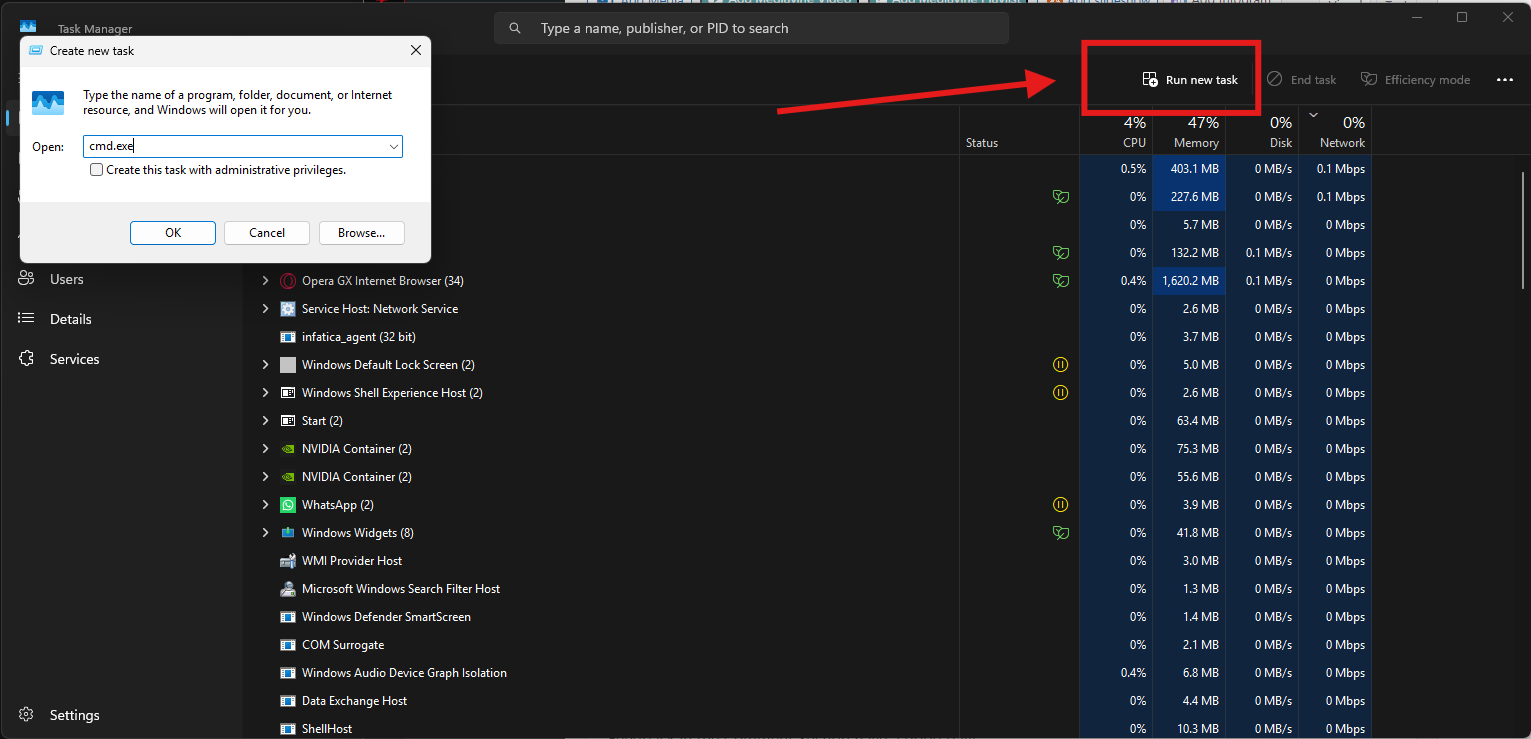
- Type
cmd.exeand check “Create this task with administrative privileges”, then press Enter.